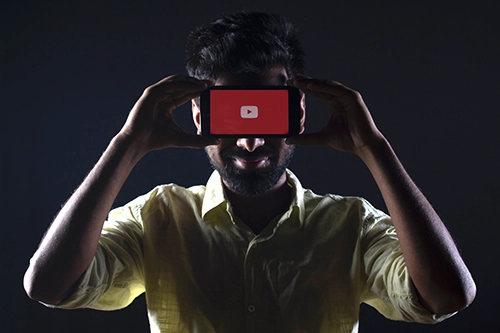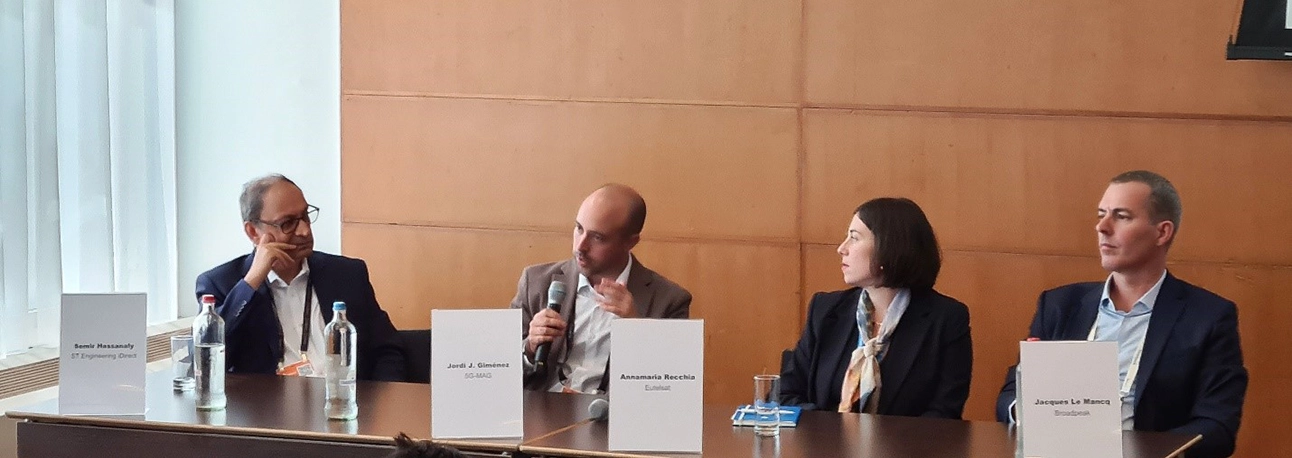At IBC 2022, we welcomed a panel of experts to join us at our ‘Sessions’ event and discuss The Bigger Picture of Video Streaming. The discussion was very insightful, and we wanted to make it available to those of you that were not at the event. Over the coming weeks, we will share the key questions and our panelists’ responses on the burning issues in this rapidly expanding market.
Joining us were (L-R): Semir Hassanaly, Head of Cellular Backhaul and Trunking, ST Engineering iDirect, Jordi J. Gimenez, Project Manager, 5G-MAG Association; Annamaria Recchia, VP, Commercial Development, Marketing and Product, Video, Eutelsat and Jacques Le Mancq, President & CEO Broadpeak.
In this edition, we ask: What role will 5G play in the future of video streaming?
Jordi: We were talking earlier about mobility experiences. I think we need to have a look at the role of 5G from the perspective of what kind of technical features can be added to the infrastructure in order to seamlessly integrate satellite into the 5G ecosystem. The ability to backhaul is one aspect. There are also ideas for edge caching or some sort of edge computing.

Semir: We can leverage the 5G infrastructure where we can dynamically place auto-delivery networks, user traffic based on the month or the quarter. That would be one way. But I think the future for us is hybrid. You have to work hand in hand with the terrestrial network as well. You have to integrate into the technical fabric so that you can orchestrate and send your content based on your application, your latency requirements, your availability requirements and the kind of tools you’re going to need. This really demands a hybrid approach.
Annamaria: We’ve been talking about the death of linear television forever, but I guess that, in the future there will still be a place for linear distribution for media content, for premium events, for sport, for live coverage. And then this will be complemented with different technologies such as satellite, native IP, OTT streaming and 5G. Of course, 5G broadcast is a nice feature that allows consumers to stream content even without a sim. However, streaming content can be quite costly on your mobile phone and this can have a huge impact. So, it will be challenging in some countries in terms of volume of consumption. For sure, 5G and all of this technology will need to co-exist.
Jacques: What we’ve found that is even more important with 5G, is the ability to be in the cloud with elasticity and also the ability to deploy capacity when you need to. We have carried out a great experiment in New York City in Madison Square Garden during our initial work together with Verizon and AWS. We are helping them to auto-scale capacity to serve the user automatically in a dynamic manner. It’s given us a lot of insight and the nice thing about satellite is that you can rely on it in these locations and can autoscale the 5G demo. We are actively working with our customers to integrate satellite and terrestrial to achieve this.
In this whitepaper you can read more on the importance of the 5G standard for satellite, key 5G technology innovations, the new applications and opportunities that 5G will address, and the advances we have made in satellite over 5G.
